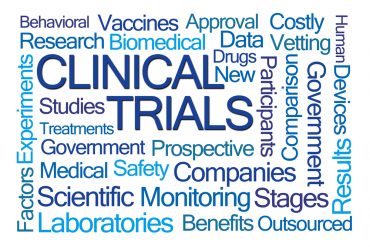
Software AG’s General Manager of API, Integration and Microservices talks about digital transformation challenges and the technologies companies can use to overcome them.
Our “6Q4” series features six questions for the leaders, innovators, and operators in the real-time analytics arena who are using innovative technologies to transform the world as we know it.
RTInsights recently asked Suraj Kumar, General Manager, API, Integration, and Microservices at Software AG, about the role of application integration and APIs in enabling digital transformations and more.
Q1: What are the main challenges companies face when they try to innovate and digitally transform?

There are a few areas where connected enterprises are facing challenges today as they move further in their digital transformation journeys. First, there is the intersection of traditional technology in the enterprise and modern digital worlds. It is no longer practical to meet the volume of the new demands and diversity of integration points with traditional point-to-point integrations. Integration that must be rewritten every time a new tech standard comes along just isn’t scalable with the limited resources and skills available.
Second is the rapid proliferation of APIs and the consequential lack of API governance. As every team in the enterprise takes an APIs first approach, their rapid spread across enterprises in an uncontrolled manner has created new challenges. This proliferation results in duplication of efforts and a lack of governance. A third area we see organizations facing challenges is in the adoption of event-driven architectures (EDAs), as many companies don’t have the proper systems to efficiently process or sense event changes – or they do but lack the knowledge about how to optimize correctly. A successful EDA will provide more flexibility and better scaling of solutions, resulting in better overall customer service and functionality, meaning successful EDA implementation will be increasingly critical for innovation and digital transformation.
Q2: What role does application integration play in addressing these challenges?
With the exploding number of SaaS applications and growing cloud footprint in an enterprise, hybrid application integration is now a foundational factor that must be taken control of and utilized in every delivery process. Hybrid application integration has become critical in addressing all the above-mentioned issues because of its ability to assist in streamlining and creating efficient processes that can eliminate roadblocks such as the unify the on-premises and cloud footprints, transition to digital, the governance of APIs, and the development of an EDA ecosystem.
Q3: How is application integration implemented?
Successful application integration requires a unified approach with hybrid integration solutions, APIs, and microservices. As the adoption of APIs has become increasingly common to enable successful digital transformation, application integration has become the basis of all these API connections. With this in mind, organizations must have an integration strategy enablement team that can further their API developments. Having a unified platform for hybrid integration, API management, and microservices can simplify the implementation.
Q4: Where do APIs fit in?
Today APIs are the interface to the business, internally and externally. Digital transformation and the increasingly connected world have been driving factors for API and integration solutions. The recent impact of the pandemic has accelerated the move to digital across industries, and rapid changes cannot be addressed without APIs. API and integration innovations need to demonstrate how organizations can simplify and accelerate the digital transformation for customers and show material business value. These solutions also need to facilitate that ongoing journey and do so based on customer reality, not an artificial vendor construct that doesn’t fit with their reality.
Platforms that are designed to be open, API-enabled, and have a vibrant EDA architecture will thrive in the modern digital world over companies that deliver a set of independent products. These ecosystems also extend the reach of integration as other companies can add value to the platform. Customers can adopt new services and extend a platform with a common UX easier than installing, configuring, and learning a set of products with differing experiences lacking end-to-end visibility.
Q5: What industries benefit most from your solutions/technologies today?
While we work with all industries globally, we have provided deeper domain-specific solutions for organizations focused on manufacturing, logistics, retail, financial services, healthcare, and the public sector.
Healthcare is of particular interest recently, where organizations in this industry had to digitize quickly because of the pandemic. This means hospitals accelerated the process of scheduling appointments and checking in online, increased telemedicine, and more. With the need for agility and greater efficiency, embedded integration can help – especially when many healthcare companies lack the proper infrastructure to adapt quickly while needing to navigate stringent regulatory standards like HIPAA compliance.
Q6: What will be the biggest developments in the field this year?
A few areas we expect will progress this year, as organizations across industries look to overcome digital transformation challenges, maintain resilience, and drive profitability, include:
- Monetization using APIs becomes real: Traditional companies will generate significant new revenue streams by monetizing their data and services using APIs
- Integration everywhere: Connect any app, any data, any device, anywhere. The need to connect is growing exponentially, and successful SaaS application adoption needs to embed integration.
- Rise of EDA in the developer community: Growing digital business supporting IoT, microservices, and real-time decisions are driving needs for EDA.
About Suraj Kumar: With over 15 years of experience in leading enterprise SaaS, cloud, and software product portfolios, Suraj Kumar currently leads global product management, development, architecture, and business development teams at Software AG. In this role, he delivers best-in-class customer solutions for digital transformation and innovation.




























